
Editor’s note: Check out our review of the latest Rocky Mountain Instinct.
Rocky Mountain has an all new Instinct on the market today, and it follows in the Altitude’s tread marks, consolidating two bikes and adding future-proof frame features and even more adjustability.
With the Altitude, Rocky Mountain condensed their lineup by eliminating the Instinct BC edition, and made the new Altitude their go-to enduro bike. Rocky has done the same thing with the Thunderbolt and the new Instinct. The Thunderbolt (RIP) started as a 130mm, 27.5″ wheel trail bike, and gained travel over the years, finishing at 140mm.
The new Instinct now has 140mm of rear travel with a 150mm fork. Instead of keeping two different 140mm trail bikes — a 27.5″ T-bolt, and a 29″ Instinct — they have both been condensed into the 2021 Instinct. Sizes XS and S are available in 27.5″ and the 29er Instinct is available in sizes S-XL. More size-specific touches include the shock tunes, and sizes XS and S have a down-sloping top tube for better standover height. Both those frames use a 190x45mm-size shock, aiding the lighter tune, whereas the larger sizes use a 210×52.5mm shock.

Rocky designed the suspension kinematics with a supple starting stroke, a supportive mid, and a progressive end stroke. The Instinct is coil-compatible and they have a C70 build that comes equipped with a Cane Creek DB Inline coil and Helm coil fork for $7,629.
Because of the split wheel sizes along the Instinct line, sizes XS and S have a slightly different set of angles than the 29ers.
For the sake of commonality, we’ll go over the size medium 29er numbers briefly, reflecting the Instinct’s position in its neutral geo setting. The HTA is 65.7°, and the STA is 76.7°. The seat tube length is a nice and stubby 420mm. The rear center gets an adjustable dropout, like the Altitude. This puts chainstay length at either 437mm or 448mm. Reach on the medium is 462mm, standover height is 801mm, and the wheelbase is 1,209mm. The Instinct gets a reduced offset fork on both wheel sizes.
The new geo numbers compared to the last generation are a little different here, and a lot different there. In neutral positions, the HTA is less than a degree slacker, the STA is just over over a degree steeper. The chainstay length was 435mm, and is now adjustable between 437-448mm. The reach has jumped a lot, by 26mm for the medium frame. The wheelbase is longer by quite a bit too; about 30mm.

What’s the main difference between the two bikes? Rocky puts it this way: “While the all-new Instinct shares many of the same technologies and frame details as our redesigned Altitude, the bikes are starkly different in their intended use and ride characteristics. The Instinct is meant for long days in the saddle and efficiently tackling all types of trails, while the Altitude was designed for aggressive riding and enduro racing. The Instinct is for the rider who’s looking to embrace the challenge of a technical climb, maintain a steady cadence on flowing singletrack, and push it on the descents.”
Frame features include a 10mm chain stay adjustment as mentioned and compatibility with a SRAM universal derailleur hanger. The Instinct has some armor along the bottom of the down tube, a “Canadian Shield” yoke protector, and chain silencing stay protection. Fitting with any nice carbon frame, there are internally guided cable ports.
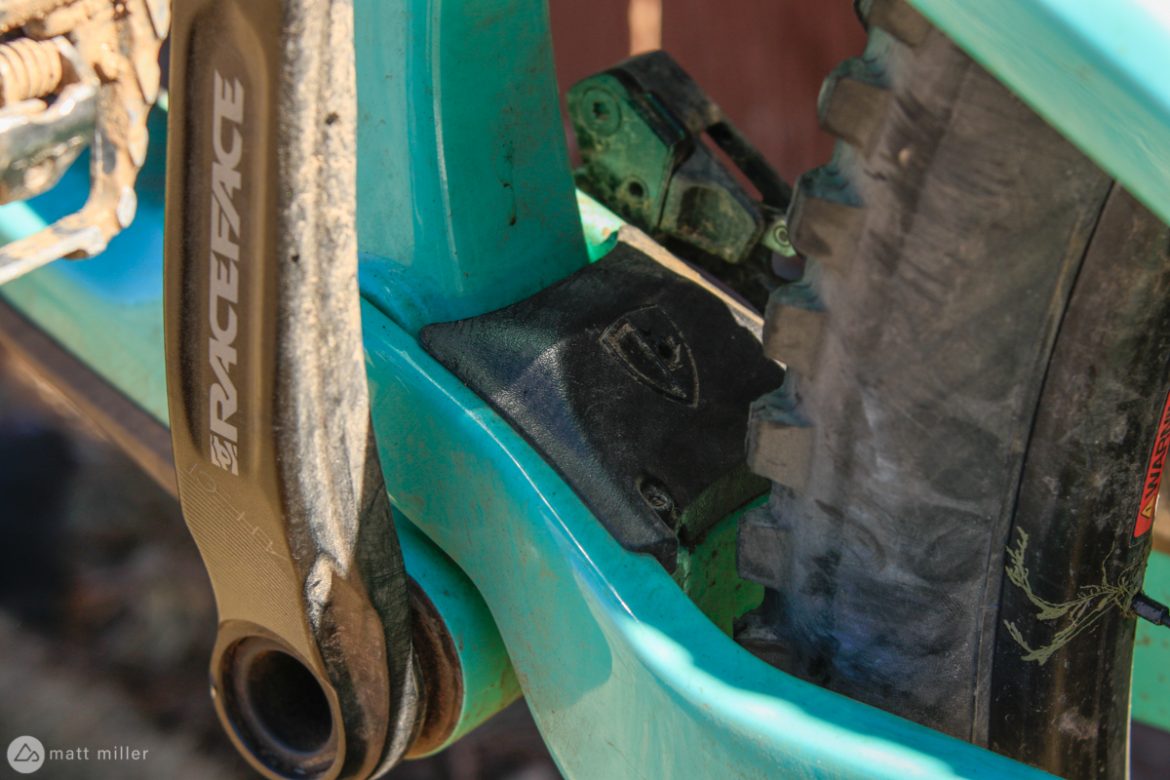

Max tire clearance is 2.6″ wide on both wheel sizes, and Rocky Mountain recommends using a 30, 32, or 34T chain ring.
On carbon frames only, the Instinct has a modular shock mount, which can be used for future kinematic updates. A frame with a Fox DPX2 shock weighs 6.9lbs in a size M. From the sounds of it, if users wanted, they could potentially get an Altitude shock mount and a longer shock, and extend the rear travel on the Instinct.
Pricing starts at $3,129 for the Alloy 30 build. A carbon frameset runs $3,549 and a Carbon 30 build costs $4,499. The build tops out at the Carbon 99 for $10,449. That includes SRAM XX1 AXS, Race Face Next R carbon wheels, a RockShox Pike Ultimate RC2 fork, and a Super Deluxe Ultimate shock.


My C50 test bike rings in at $5,549. This build comes with a Fox 36 Float EVOL fork with a GRIP (1) damper and a Float DPS Performance shock, Shimano XT brakes and derailleur, a Shimano SLX shifter, Race Face Aeffect cranks, and wheels with WTB ST Light i30 rims with a DT Swiss 370 rear hub. The Instinct comes with quality tires across all builds; Maxxis Minion DHR IIs and DHFs, with MaxxTerra compound and EXO+ sidewalls.
Rocky Mountain has included their own branded cockpit and dropper post. Sizes extra small and small get a 125mm dropper, mediums and larges get a 150mm, and extra larges get 170mm of dropper post travel.
On the trail

Having ridden most of Rocky’s bikes over the past few years, I have discovered a central theme among them: the kinematics always feel aimed at great traction in the initial stroke, and the frames are brawny. I suppose that’s what I’d want designing a bike with BC trails in mind, where slippery roots and steep fall lines demand those kinds of things.
For a 140mm “trail” bike, the Instinct feels overbuilt, and I don’t mean that in a bad way. It’s not all that heavy, at 30.8 pounds for my size medium C50 Build, but it’s not a trail bike I’d hesitate to throw into an enduro race either. With touches like Shimano XT 4-piston brakes, a Fox 36, and Maxxis EXO+ tires with MaxxTerra compound, the mid-shelf C50 build feels adequately equipped to deal with most anything.
There are some interesting things to note between the Altitude, released late last summer, and this Instinct with 20mm less travel. In a lot of ways, the Instinct feels like a mini-Altitude. I loved the Altitude’s confidence through high-speed chunky situations, and the Instinct almost has that same feel – not quite as brutish – but at a lower expense when it comes to climbing.

The seat tube angle is more vertical, which is a welcome addition. The wheelbase is getting longer and the head tube angle is still fairly steep compared to other trail bikes of today. Thus, the cockpit seems a little tighter on the climbs and overall the bike feels a little long through tight switchbacks.
The Instinct’s suspension remains active in the saddle, and I sought the middle position of the Fox shock when things got steep, since the bike starts to feel a little more sluggish. Pedaling in the saddle over moderate grades is more exciting, and again, on really messy, ledgy climbing trails, that eager traction is welcome.
Otherwise, there are more exciting 140mm travel bikes to climb on, though I’d still welcome the Instinct C50 for all-day rides, knowing that it’s not the fastest, but it will get the whole job done comfortably.
Descending is really what the Instinct was built for. The bike might be labeled as a “trail” bike, but it feels heavy-handed. The suspension is sensitive and eager throughout the first 40%. Then comes a firmer feel and a sharp, but not harsh, ramp up in the end of the stroke.
I was a little surprised that Rocky went with an inline Fox DPS on the Instinct, because it feels so much more capable. This hasn’t seemed to hinder the bike much. With such an active leverage rate early on, it’s still quite sensitive to small inputs from the trail. That said, I’m curious to know how it performs with a more voluminous air can on the back.

Bikes like the Instinct always make me rethink how slack a modern mountain bike needs to be. My riding until this point was spent in the neutral setting, at 65.9° for the HTA. The Instinct uses a reduced offset fork. I never felt like it needed to be more slack for anything, and I also liked how quick and responsive the steering is at speed, and the geo pushes the bike back into the “trail” category. Maybe it’s the longer wheelbase that accommodates stability, but the Instinct makes me appreciate the precise nature of a bike that isn’t raked out too much.
Paired with the hop-happy personality, the Instinct is not only stable, fast, and confident on the descents, it’s a pleasure jumping over almost anything. This gives the Instinct a split personality: A happy-go-lucky trail bike for every day rides, and a mini-enduro bike that can handle fast and technical trails.
The C50 build

The Instinct has become considerably more pricey than before. The new bike is $650 more than the last frame, with the 2021 carbon Instinct frameset priced at $3,549. Rocky Mountain says that this is unfortunately the result of pandemic-induced manufacturing and supply squeezes. The aluminum A30 complete in 2020 cost $2,600. The new version costs $3,129. Carbon builds start with the C30 at $4,499, whereas they previously did not offer a C30.
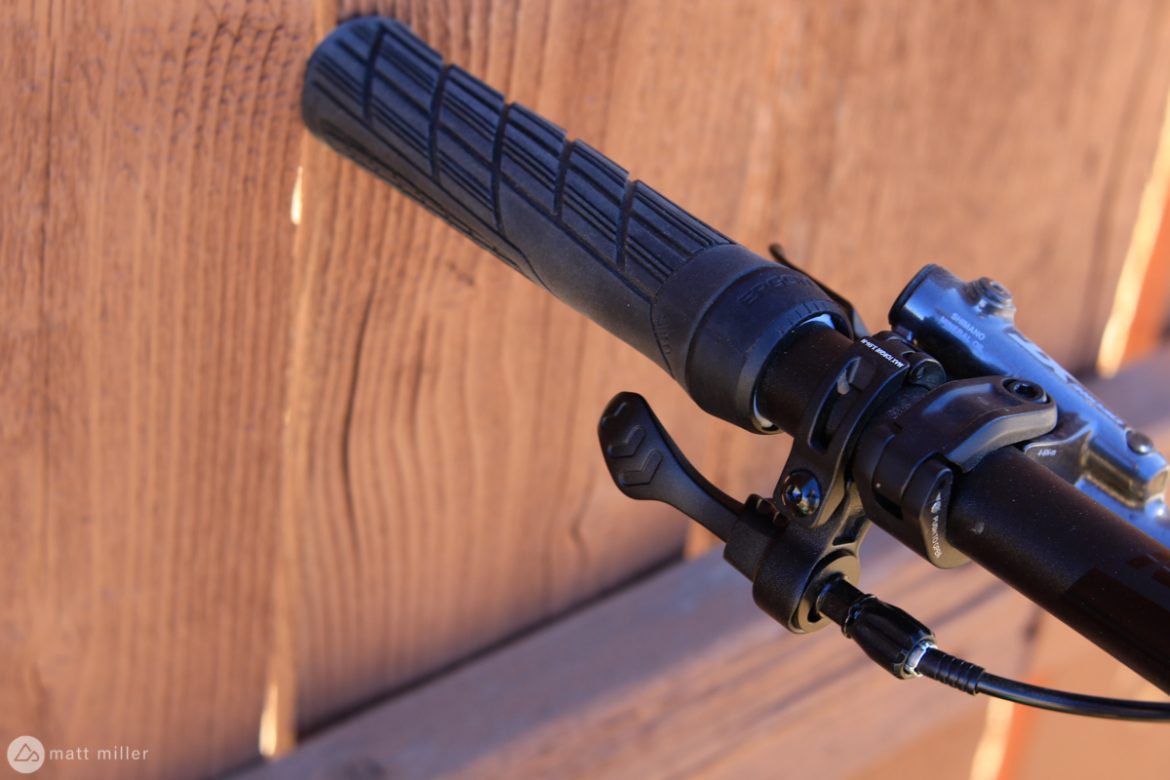

The C50 was their starting carbon build, pegged at $4,750. My test sample C50 now retails for $5,549, and the builds are very similar. On the previous C50, buyers got a OneUp dropper post, whereas the new one is a Rocky Mountain branded dropper that looks and feels a lot like an X-Fusion Manic post. (Guess what? It is a Manic). Instead of 2-piston Shimano SLX levers, the new C50 has Shimano XT, which is a great upgrade but doesn’t offset the cost difference between the two generations. All in all, the new Instinct is not the most competitive trail bike out there when it comes to value.
That said, for a mid-level build, I think Rocky has done a great job with the C50. Shimano XT brakes and 180mm rotors front and back are nice, as is the XT derailleur. Paired with a Shimano SLX shifter, the drivetrain should be reliable for a long time, and satisfy most when it comes to performance. The 12-speed Shimano system has worked flawlessly for me, as usual, and the 4-piston XT brakes are always reliable and a welcome sight on builds.
The medium and large frame come specced with 150mm droppers, and folks shouldn’t have a hard time fitting a longer post inside. The C/A50 models and above come with the tougher and grippier Maxxis EXO+, 3C MaxxTerra tires, whereas the C/A30 models get a lighter EXO casing and two-compound tread for both Minions.
Closing thoughts

Rocky Mountain has steered the Instinct, and it’s smaller sibling, the Thunderbolt, in a commendable direction with this new generation. The Thunderbolt was a genuinely fun, short-travel bike to ride with smaller wheels, and while for taller riders, the wheels grow, the new Instinct keeps a really playful feel.
The Ride-9 geo system is a familiar piece of tech on Rocky’s bikes, but the addition of the adjustable chainstay and (someday) replaceable upper shock mount to keep up with updates are great to see. My only real nitpick with the Instinct is the considerable raise in price on the models, and this makes it a less competitive contender in the trail bike category. This of course is a byproduct of the pandemic, but not all brands have had to raise their prices quite as much.
All in all though, I have really enjoyed the Instinct’s ride characteristics. It’s a very capable 140mm-travel trail bike, with the confidence to B-line it down a mountain and a personality that enjoys playing around a bit too, all with the chops to spend a long day in the saddle.

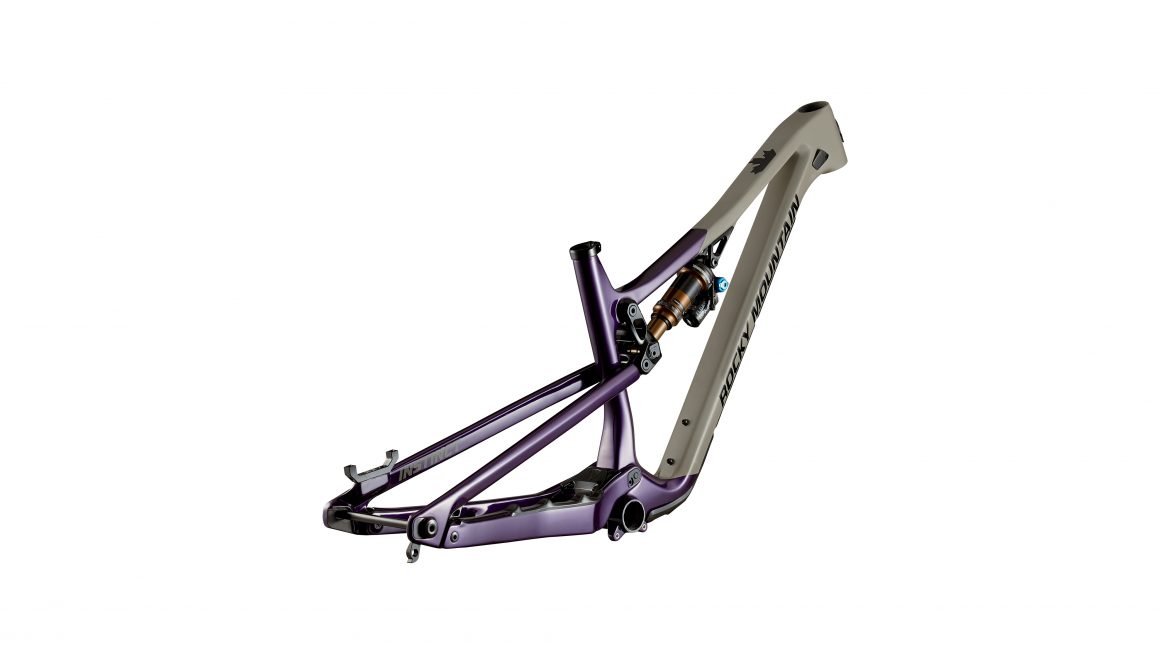
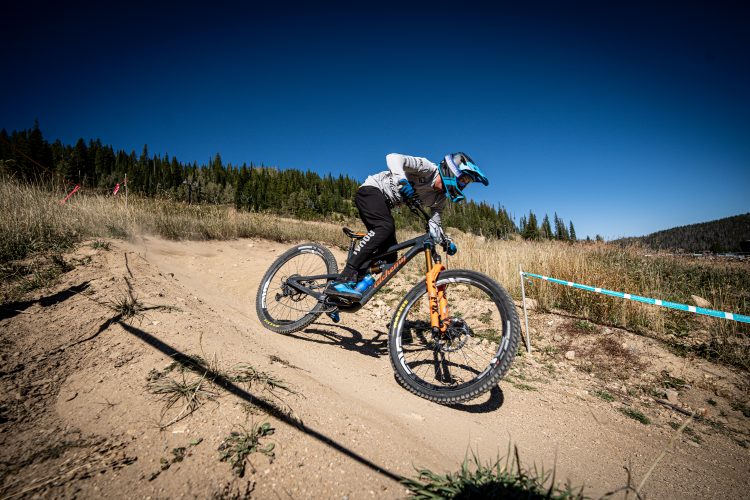



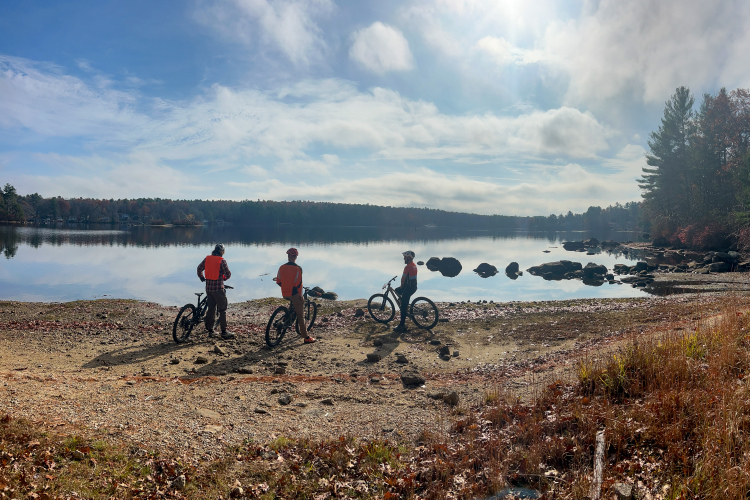


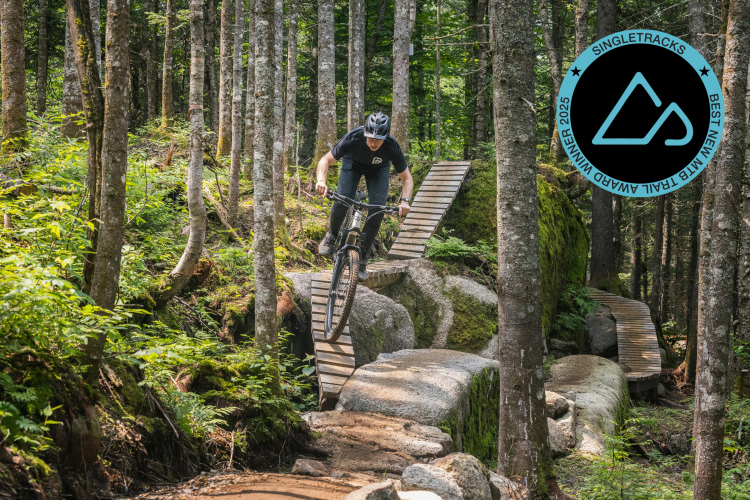

0 Comments